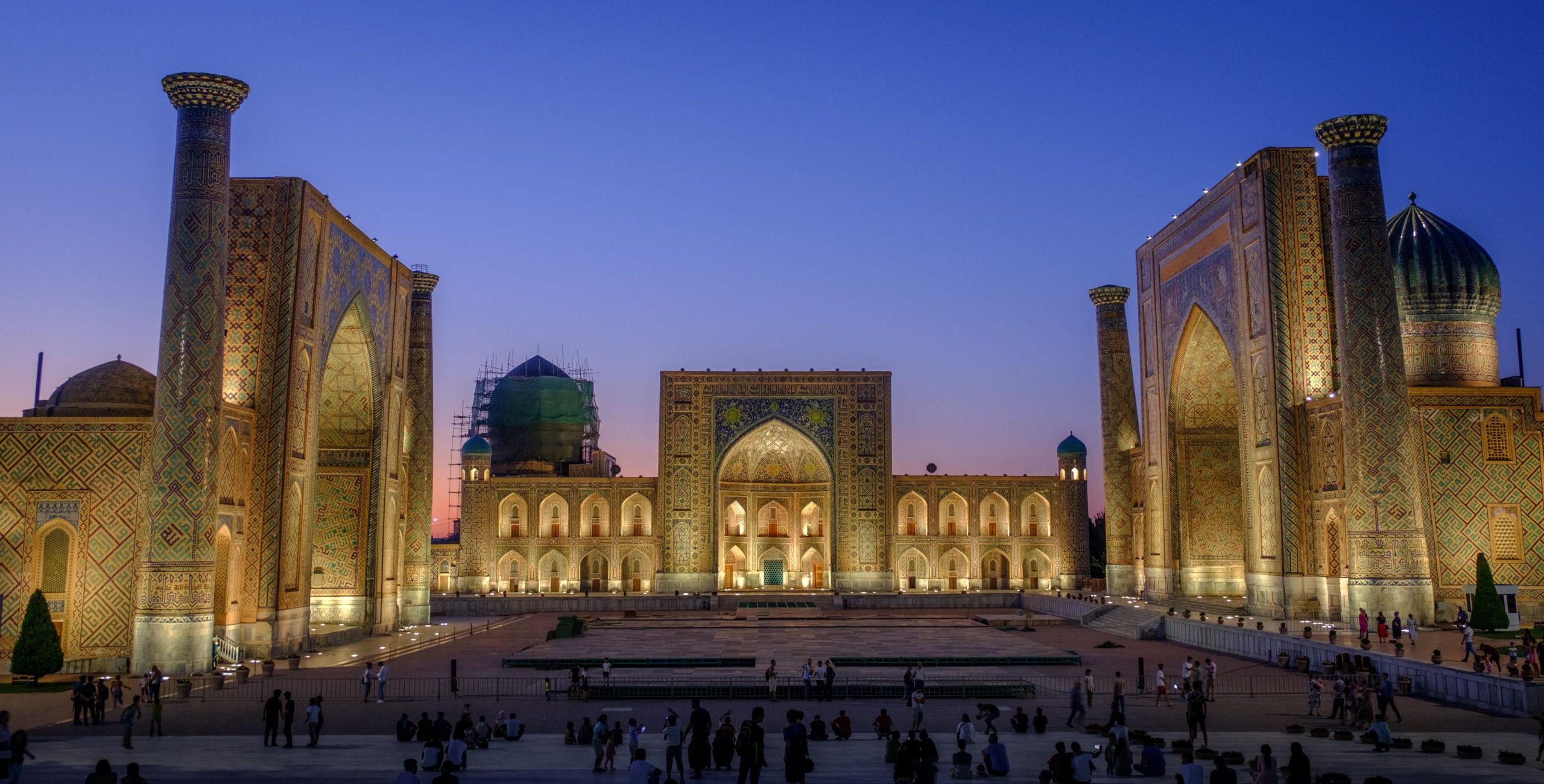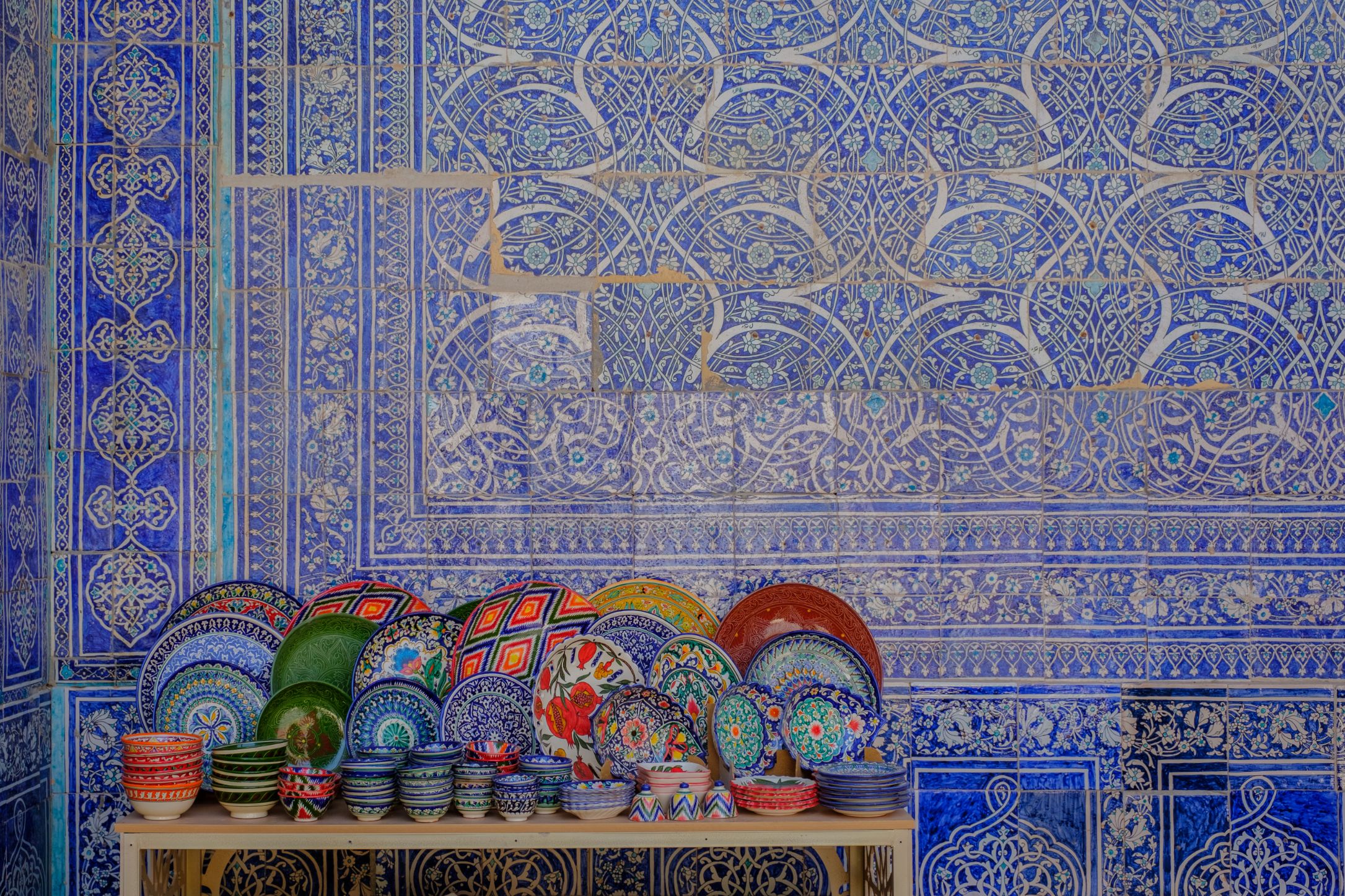Uzbekistan is virtually synonymous with the Silk Road, and three of the greatest Silk Road cities – Samarkand, Bukhara and Khiva – all fall on Uzbek soil. We’ve compiled a list of Uzbekistan’s best Silk Road sights.
Click on gallery images to see in full size with captions:
Samarkand, southeast Uzbekistan
The Registan
The Registan square is thought of as Samarkand’s biggest tourist attraction. Its three exquisite madrasas are adorned with an almost infinite number of contrasting and colourful patterns that somehow never clash, making this a picture-perfect scene.
During the warmer months, there is a spectacular free sound and light show in the courtyard, which gives a light (excuse the pun) and rather kitsch overview of the buildings and how they fit into world culture. Crowds gather to watch, standing on and in front of the viewing platform.
Shah-i Zinda
Most people come to Samarkand for the Registan but, though it is undoubtedly impressive, the city’s real gem is the collection of medieval tiled tombs known as the Shah-i Zinda (the Living King).

Arriving at dusk, the experience is magical. The tour groups have retreated to their hotels for dinner, as have the schoolchildren; if you’re lucky you’ll have the place to yourself. You can expect to see every variety of turquoise- and lapis lazuli-coloured glazed tiles attached to the façades of the tombs of female members of the Timurid dynasty, as well as generals, advisors and holy figures.
Bibi Khanym Mosque
This is one of Samarkand’s most impressive sites and thus one of Uzbekistan’s best Silk Road sights, but also one of its most controversial owing to the heavy reconstruction that has taken place. It was built between 1399 and 1404, when it was the world’s largest mosque.


It seems that the speed of the mosque’s original construction led to shoddy workmanship, and began to decay not long after completion. What you see now is an almost total rebuild that started in 1974, as much of the original collapsed after an earthquake in 1897. Restoration is still underway, notably in the great western cupola, where huge earthquake cracks are still visible.
Gur-i Amir
Amir Timur wanted to be buried in a simple tomb in his home town of Shakhrisabz, but his relatives and advisers had grander plans, for which Samarkand’s modern tour guides are no doubt grateful.

The Gur-i Amir, a compact but gem-like building, was built for Timur’s grandson Muhammad Sultan in 1404. Timur was said to be heartbroken at this loss: he had appointed Muhammad Sultan as his successor and had great confidence in his abilities. When Timur himself died of pneumonia a year later, he was laid to rest in the same tomb, his body covered with a slab of Mongolian jade.
Bukhara, southwest Uzbekistan
Poi Kalyon
This simple square is framed by some of the most spectacular buildings on earth: the Mir-i Arab Madrasa, the Kalyon Juma Mosque and the majestic 11th-century Kalyon Minar, one of the few buildings in the city to pre-date Genghis Khan’s invasion.


He saw its elegant silhouette from a great distance away as he rode across the steppe and found it so beautiful that when he arrived in Bukhara he could not bear to see it destroyed. Everything else, however, was razed to the ground and the population of Bukhara was butchered.
Kalyon Mosque
In the sundiallike shadow of the Kalyon Minar, the Kalyon Mosque stands on the foundations of the earlier, 8th-century mosque in which Genghis Khan ordered that the pages of the Qu’ran be trampled beneath the feet of his horses and the entirety of Bukhara (with the exception of the Kalyon Minar) be destroyed. The mosque was burnt to a cinder.


This replacement, a worthy successor, is also known as the Juma or Friday Mosque and was built by the Shaybanids in 1514. An inscription on the mosque’s façade attests to this completion date. Since then it has served as the city’s main mosque: there is space for more than 10,000 worshippers to pray, the entire male population of the city at the time of its construction.
Mir-i Arab Madrasa
Opposite the mosque is the Mir-i Arab Madrasa, constructed, so they say, with the profits from the sale of 3,000 Persian slaves. Its benefactor, the Shaybanid Khan Ubaidullah, clearly felt a need to salve his conscience, and hence in 1530–36 he endowed what is considered one of the most important educational establishments in the Islamic world.


With the exception of a 21-year period of closure from 1925 to 1946, it has remained fully functional, including throughout the Soviet period, and today around 120 students are studying here. They take a demanding four-year programme of Arabic and Qu’ranic studies, the first step on the path to becoming imams. There is limited access for tourists to the madrasa: you can enter the foyer and look into the inner courtyard but, theoretically at least, can go no further.
Chor Minor
Located to the east of Bukhara’s Old Town, this is a stubby, brick-built structure with four turquoise domes. The uncharitable have described it as looking like an upturned chair. The name Chor Minor, meaning ‘four minarets’, is a misnomer, however, as though the towers look like minarets, they were never designed (or used) as a location from which the muezzin could call the faithful to prayer.
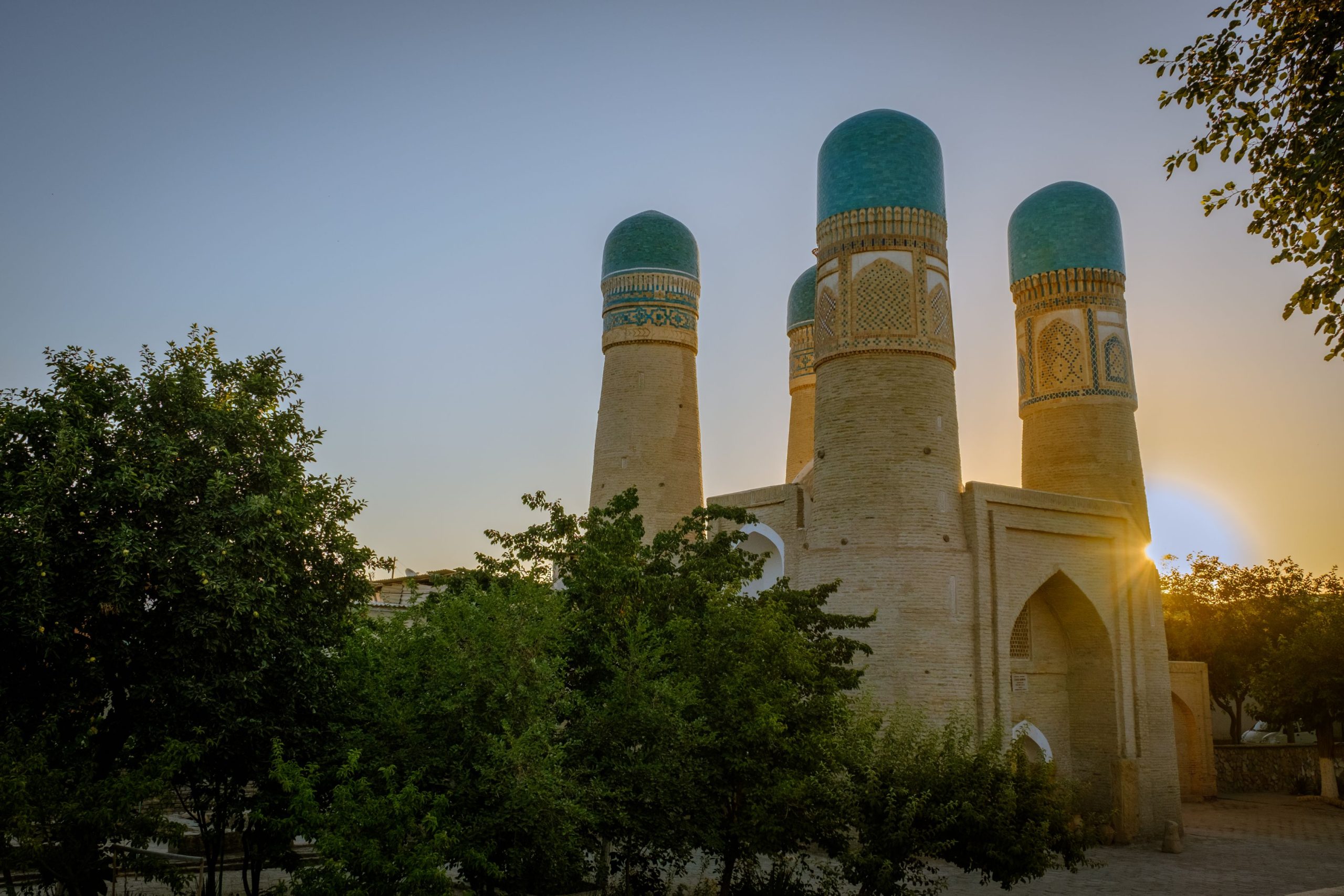
There’s now a laughable plastic nest, decorated with storks on one of them, to deter the real ones from nesting, and a souvenir shop inside. Originally the gatehouse to a madrasa that has now disappeared, the Chor Minor housed a library, accessed via the staircase in the front right tower. Students would take their books to read in the cells on either side of the building, several of which still survive. You can climb the same staircase on to the roof, though in all honesty you can’t see very far.
Khiva, central Uzbekistan
Ichon Qala
The heart of the Museum City, the Ichon Qala seems like a time warp. Listed as a UNESCO World Heritage Site since 1990, it is devoid of cars in its central areas, and with most of the modern infrastructure hidden from view, if you wake up and get out early, or take a walk late in the evening once the crowds have gone, then you’ll capture a glimpse of Khiva in a bygone age, albeit rather cleaner.
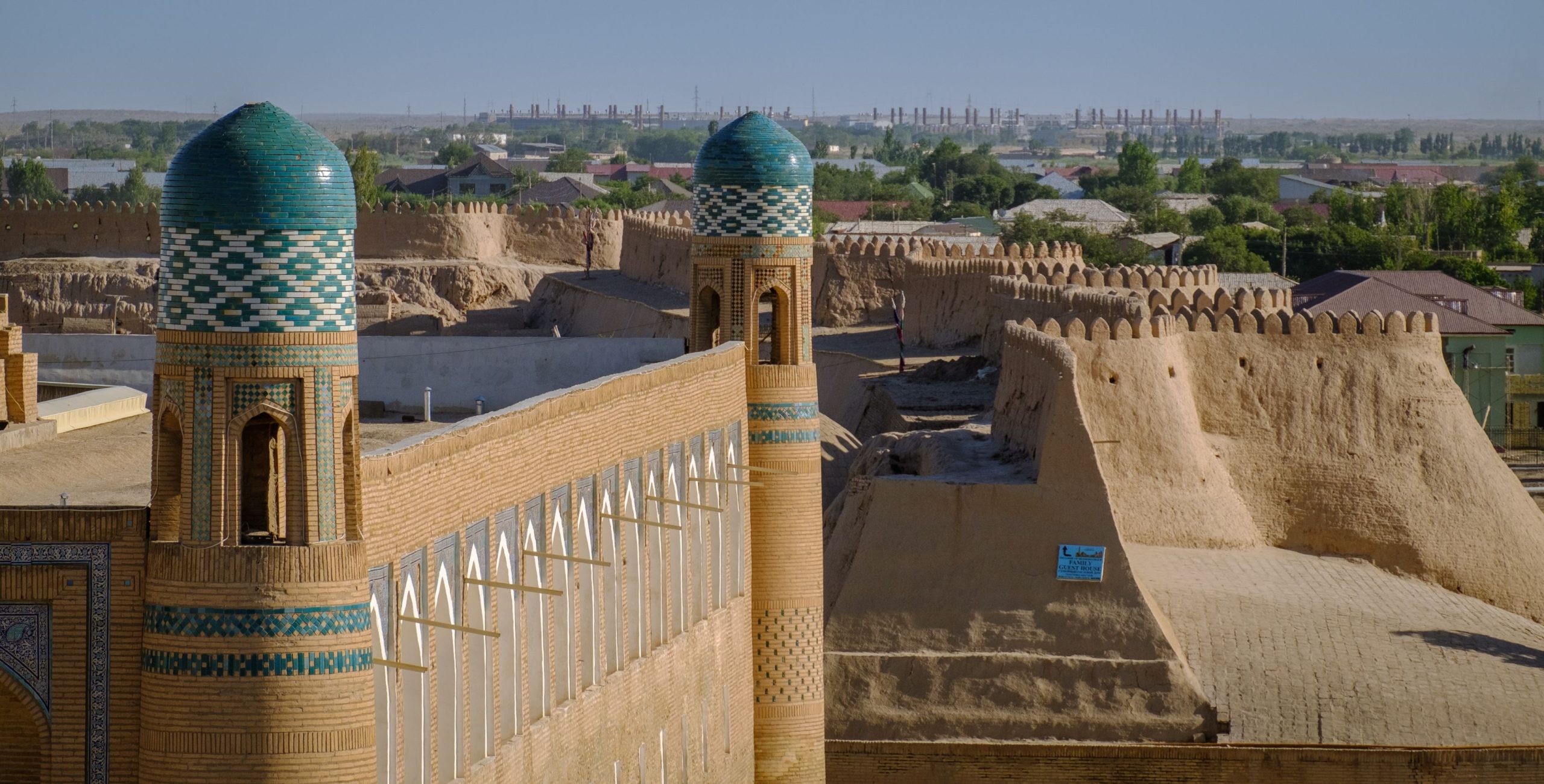
The crenellated city walls were Khiva’s first line of defence from medieval raiders. Some 2.2km (1.4 miles) surround the city centre, and at their most impressive point they are 10m high and 8m thick. Built from adobe mud bricks, the oldest remaining sections of the walls date from the 5th century ad, though much of what you see is of far later (17th century) construction.
Kalta Minar
Every postcard of Khiva seems to be illustrated with a photo of the Kalta Minar. This stumpy, but still eye-catching, green-and-turquoise landmark was intended to be the tallest minaret in central Asia: its patron, Muhammad Amin Khan, planned for it to be at least 70m tall, allegedly so that you could see Bukhara from the top.
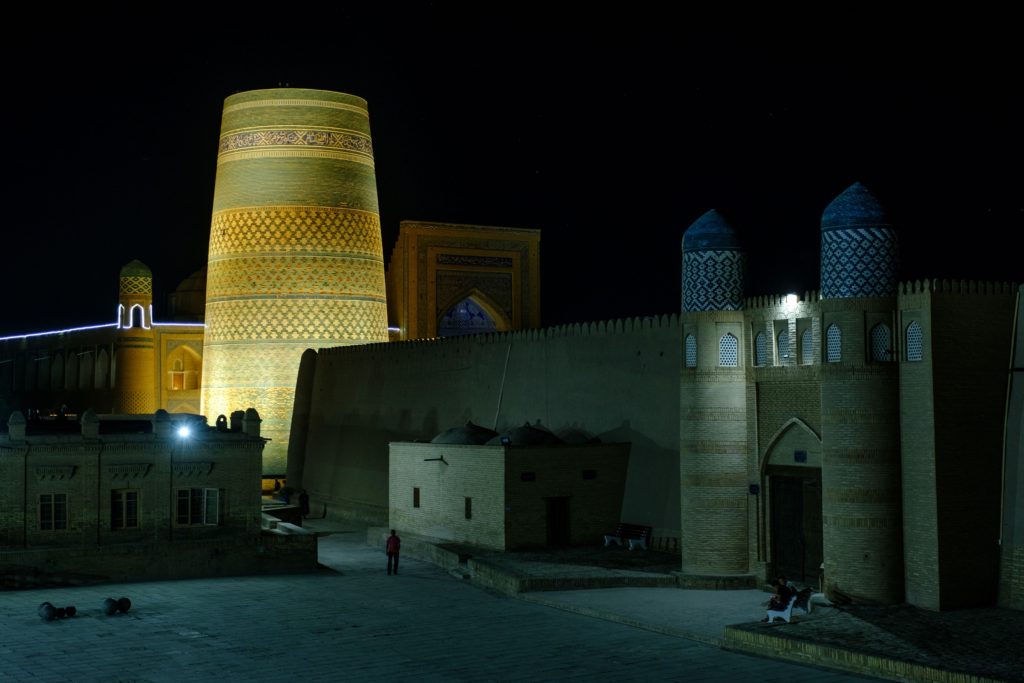
Sadly, it was not to be. Muhammad was murdered before the minaret was complete and the architect responsible for the project fled.
Islam Khoja Madrasa and Minaret
Rather more graceful looking than the Kalta Minar is the Islam Khoja Minaret, which adjoins the Islam Khoja Madrasa in the south of the Ichon Qala. Almost 57m tall, it looks even taller due to the tapered shape and the varying widths of the yellow and blue-green stripes. It is possible to climb the 120 steps to the top, following in the footsteps of the city’s watchmen.


The striking turquoise Islam Khoja Madrasa is a surprisingly late construction: it was completed only in 1908. Its founder, Islam Khoja, was grand vizier to the khan and an active educationalist. He introduced several educational reforms, endowed schools and hospitals, and his pièce de résistance is this building.
Sadly, the completion of the project is tied up in tragedy: Islam Khoja was assassinated in 1913 and the madrasa’s architect was buried alive by Emir Isfandiyar Khan as a potential witness to the murder.
More info on Uzbekistan’s best Silk Road sights
Keen to explore more of Uzbekistan? Start planning your trip with our guide:
